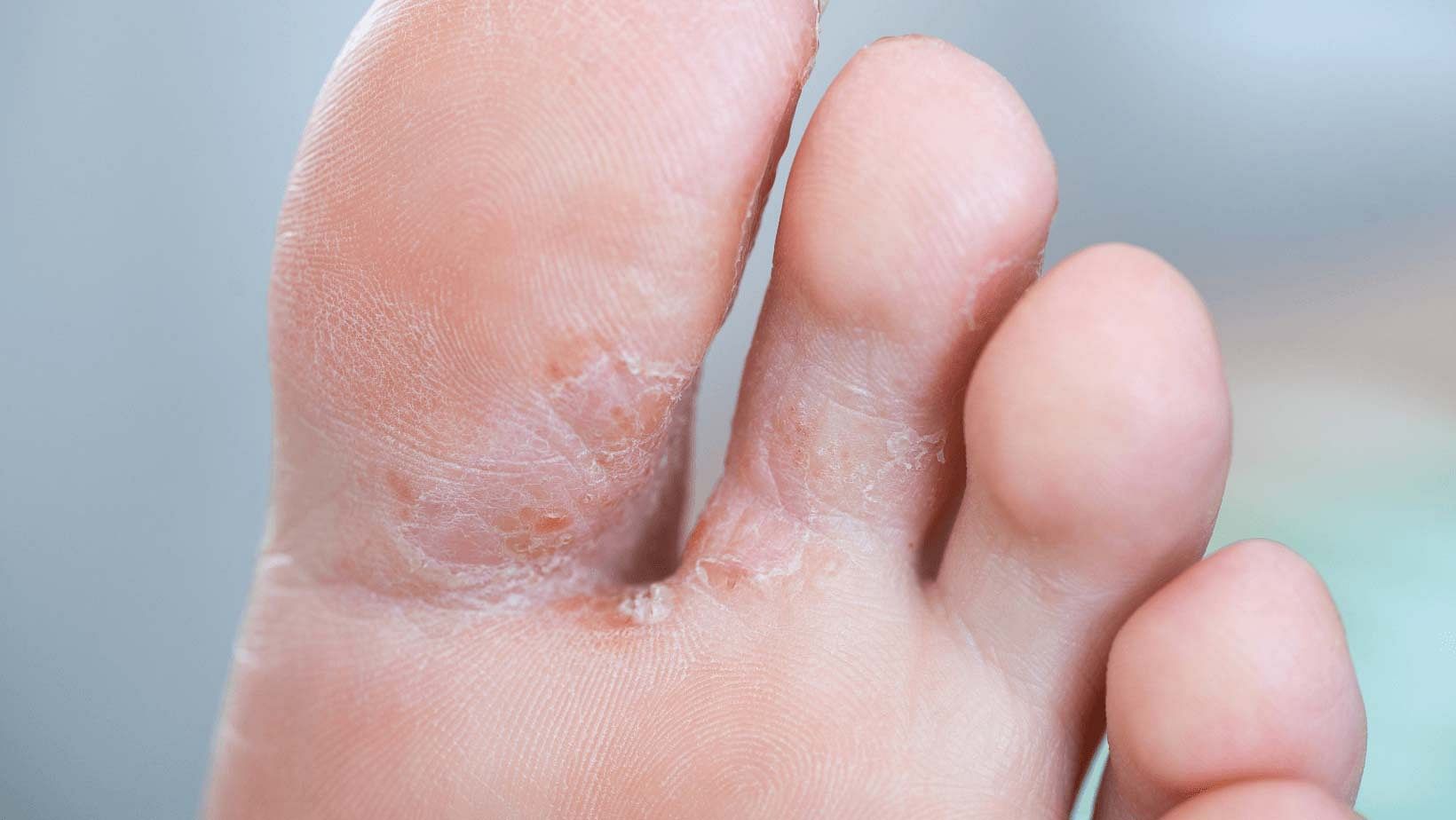What Is Athlete's Foot?
Certain lifestyle habits may increase your chances of catching a fungal infection between foot fingers. Certain situations that can lead to getting athlete’s foot are as follows:

What is Athlete’s Foot Disease?
Athlete’s foot is a fungal infection in foot fingers that occurs due to excess sweat produced in tight-fitting shoes. It usually starts between the toes and can spread from there to different parts of the body.
What Causes Athlete’s Foot?
Also called Tinea Pedis, Athlete’s Foot fungus is caused by Tinea fungus. This fungus is the same type of fungus that causes ringworm and jock itch. Wearing tight fitted shoes, damp socks in warm and humid conditions can cause this fungal foot infection.
Because of its contagious nature, this foot fingers infection can be a result of unconscious contact with contaminated surfaces, such as used towels and socks, swimming pools, and locker room floors.
Who is at Risk of Getting Athlete’s Foot?
Certain lifestyle habits may increase your chances of catching a fungal infection between foot fingers. Certain situations that can lead to getting athlete’s foot are as follows:
- If you wear damp socks and tight-fitting shoes often. It may cause you to sweat a lot.
- If you walk barefoot in public places, where the infection can easily spread.
- If you share towels, socks, shoes, rugs and mats with others.
- If you have sweaty feet.
- If you have a minor injury on your foot.
Signs and Symptoms of Athlete’s Foot
At an early stage, the Athlete’s foot fungus starts between the toes as patches or fissures. Later on, other Athlete’s foot symptoms might start to show up.
- Red scaly patches that can cause itching and stinging between the toes.
- Blisters on feet.
- Ulcers on feet.
- Dry and cracking skin on feet.
- Toenails separating from the nail bed.
- Discoloured and crumbly toenails
Athlete's foot can often be mistaken for dryness or eczema. If it gets worse, it can spread up to other parts of the body like hands, groin area and nails.
Athlete’s Foot Diagnosis
This fungal infection on feet is usually detected by doctors by simply taking a note of the symptoms.
In some cases, the doctor can even choose to perform a skin lesion potassium hydroxide exam. This is the most common examination for a case of Athlete’s foot infection.
In this test, the doctor scrapes a small area of the infected skin and then dips it in the chemical of potassium hydroxide (KOH). This chemical destroys all the normal uninfected skin cells and leaves the infected cells, which is then observed under a microscope.
Athlete’s Foot Treatment
Over-the-counter treatment for Athlete’s Foot
There are several over the counter Tinea Pedis treatment medications.
Foot fungus creams,anti-fungal powders and sprays are easily available, as they are convenient treatments for foot fungal infections.
Some topical over-the-counter medications include Lotrimin Ultra, Lotrimin AF, and Miconazole.
Prescription medicines for Athlete’s Foot
Your doctor may suggest some medicines for treating Athlete's Foot. These are;
- Oral antifungal treatment through medications like terbinafine and itraconazole.
- Topical steroids to deal in cases of painful inflammation.
- Oral antibiotic medication in case bacterial infections which develop as a result of bad condition of the skin due to Athlete's Foot.
All these medications should not be used without consulting a doctor first.
How to Prevent Athlete’s Foot?
There are some practices that you can adopt to prevent Athlete's Foot:
- Wear clean and dry socks every day.
- Do not wear tight-fitting shoes, instead wear well-ventilated shoes made up of breathable materials.
- Wash your feet with soap and water every day.
- Do not share footwear, rugs, mats and socks with anyone.
- Do not walk barefoot in public places, where chances of contamination are more.
- Apply antifungal powder on your feet every day.
- Wear alternate pairs of shoes so that you give your shoes ample time to dry after every time you wear them.
Conclusion
Athlete’s foot disease is caused by poor hygiene or by coming in contact with someone or something already infected. Athlete’s foot remedy and treatment are very effective if done properly.
However, this infection can be recurring and make a return after some time of treating it. So, make sure to adopt hygienic practices to prevent this fungal foot infection of the toes.
FAQs
How do you get rid of an Athlete's Foot fast?
Over the counter foot antifungal creams, sprays, powder and other foot fungus medicine can be used to treat Athlete's Foot quick. However, you should check with your doctor before using them.
What will happen if Athlete's Foot is left untreated?
If left untreated, Athlete's Foot can affect hands, nails and the groin area too. A case of severe Athlete’s Foot can also cause bacterial infections.
Does vinegar cure Athlete's Foot?
In cases of a mild Athlete's Foot, soaking your feet in vinegar for 10-15 minutes daily is a form of foot fungus home remedy. However, it is best to consult your doctor.
Can Athlete's Foot go away on its own?
Athlete’s foot, although it doesn’t cause much harm to a healthy person, it still does not go away on its own.

